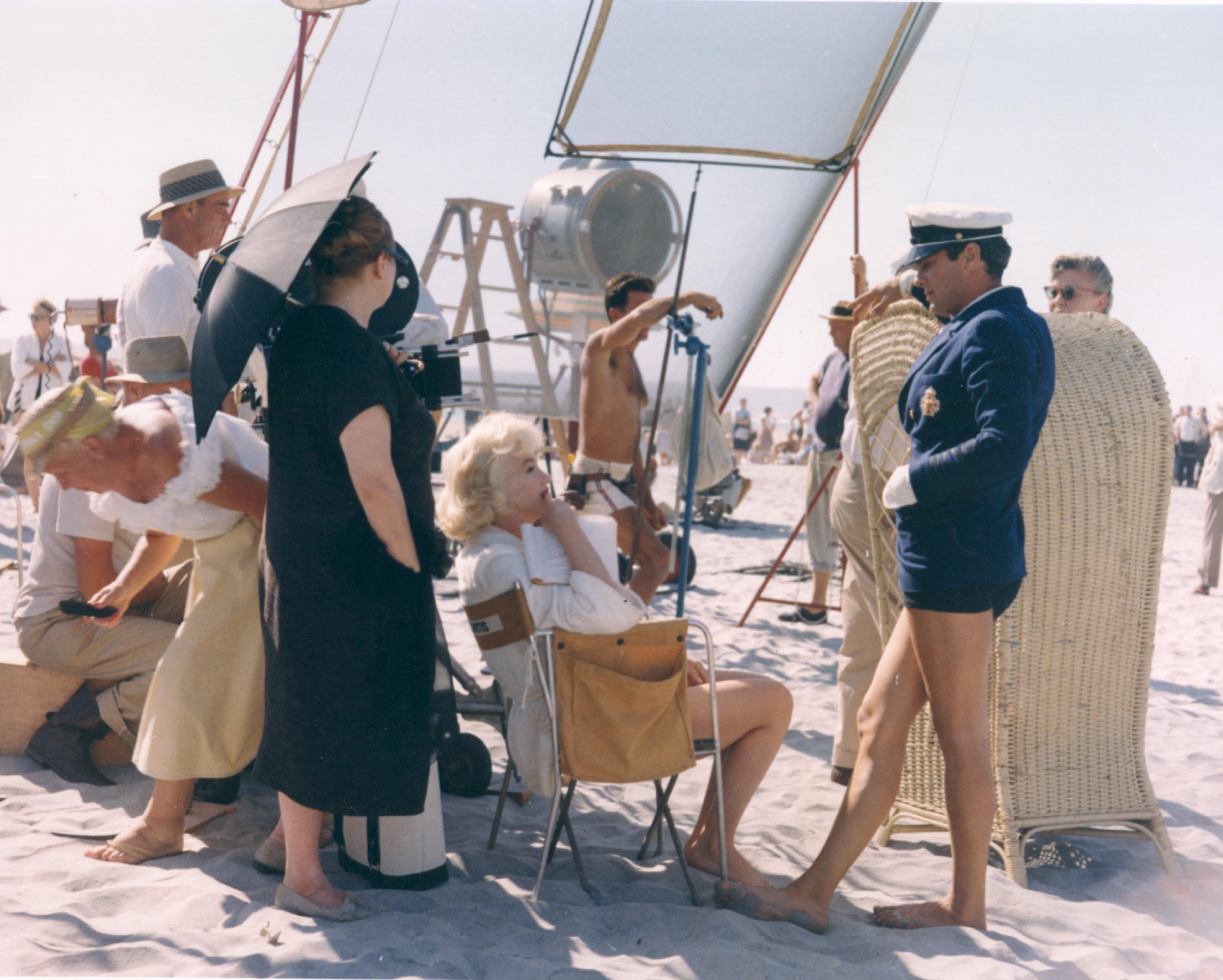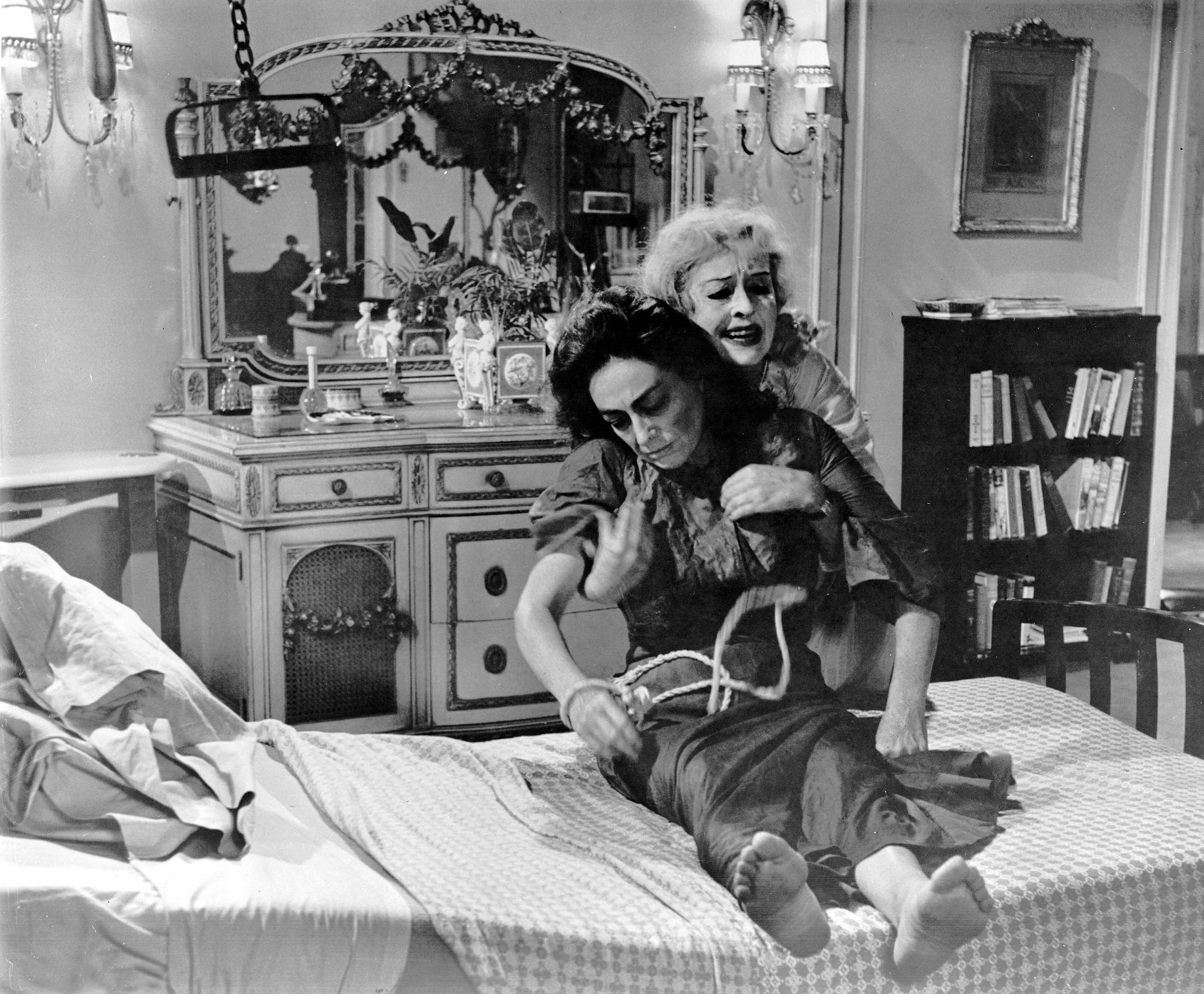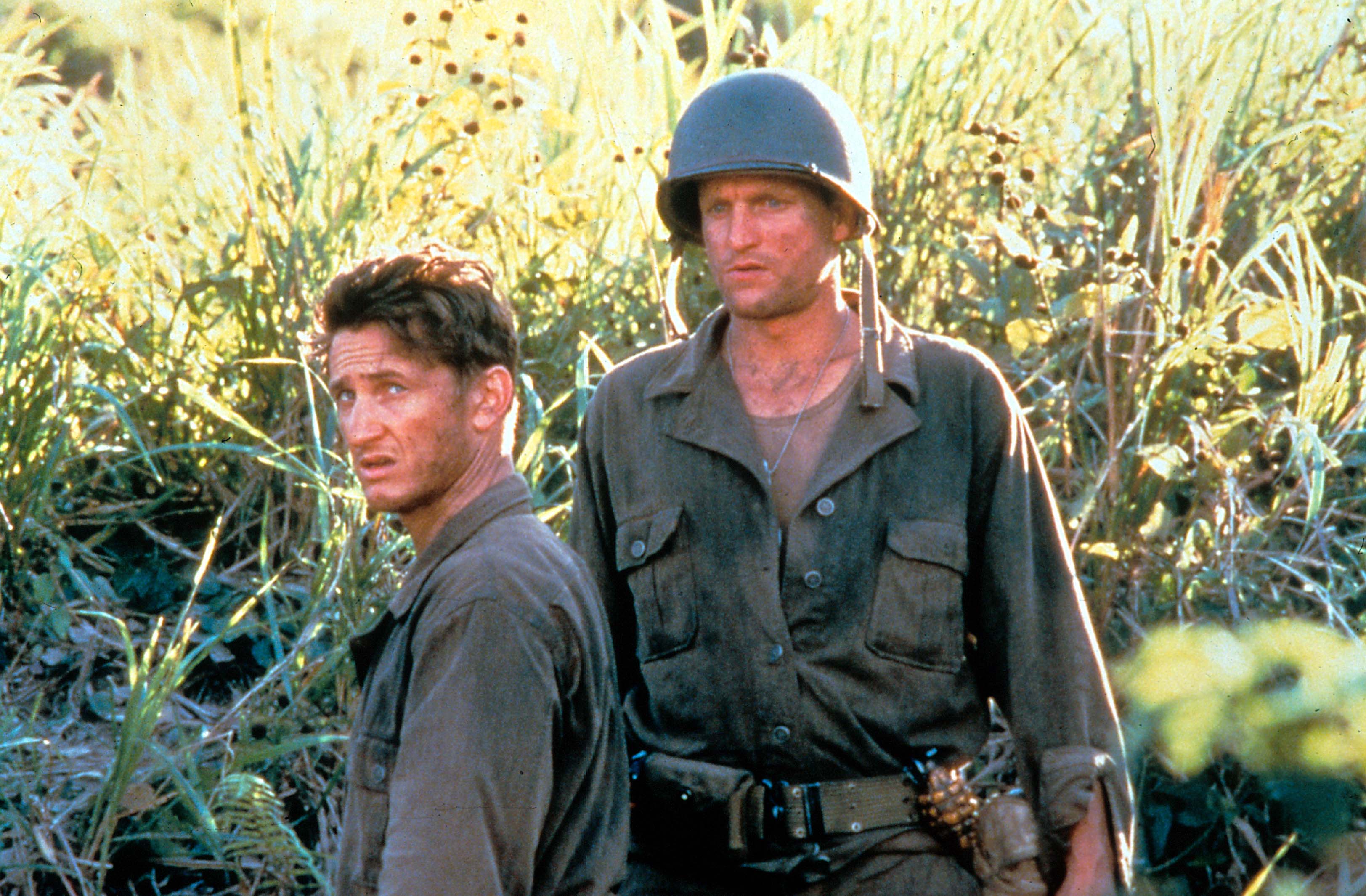Feuds, affairs and total mayhem: Why it’s the norm on almost all film sets – not just Don’t Worry Darling
As the media frenzy surrounding Olivia Wilde’s film, which premiered at the Venice Film Festival this week, intensified with the film’s star Florence Pugh’s no-show at the press conference, Geoffrey Macnab looks back at other films where production troubles became the story

They faced the world’s media looking like furtive teenagers who had been caught doing something very naughty on a school camping trip. When Olivia Wilde and cast members from her new film Don’t Worry Darling gave a press conference in Venice earlier this week, it was a toe-curling affair for all concerned. What should have been a moment of celebration turned into an ordeal. Pop star turned actor Harry Styles, well accustomed to tabloid scrutiny, writhed uncomfortably. Chris Pine stared downward. Wilde smiled grimly.
Wilde’s dystopian sci-fi thriller has been the most hotly debated film in the festival which ends this weekend. The focus, though, hasn’t been on the performances or the daring of the director’s aesthetic choices. Instead, everyone has been talking about the mayhem behind the scenes – the alleged affair between Wilde and her leading man Styles, simmering tensions between cast members, disputes over pay and status, and just why the star Florence Pugh didn’t turn up at the press conference.
It was fitting that the film screened shortly before the Venice Festival premiere of Andrew Dominik’s Blonde, his biopic of Marilyn Monroe based on the Joyce Carol Oates book about the star. After all, Monroe, played by Ana De Armas, was involved in many Hollywood productions which were even more fraught behind the scenes than Don’t Worry Darling. Monroe was a victim of the Hollywood system. She was used, abused, and then spat out by the studios but when she was on a film set, she invariably left chaos in her wake.
“She was perfectly un-punctual. She never came on time once…you could always count on her – to be late,” Billy Wilder told biographer Charlotte Chandler after working with Monroe on The Seven Year Itch and Some Like it Hot.
Monroe drove her co-stars and director to distraction. She would stay in her trailer for hours on end while everyone else was ready to shoot. Tony Curtis remembered that when he was dressed in drag on Some Like it Hot, Monroe kept him waiting for hours at a time he was wearing high heels and a metal jock-strap that made it impossible to pee. He, therefore, “rigged up a funnel and hose” that allowed him to “relieve myself without going to the John”. Curtis had had an affair with Monroe but still made his cheap, notorious quip that in the romantic scenes with her, it was like “kissing Hitler”.
In Monroe’s case, Wilder always insisted that it “was worth the agony of working with her” because the results were ultimately so spectacular. “She wouldn’t know her lines. Terrible. Then, on the 30th take, she would say it like no one else ever could.”
Monroe’s antics were just an extreme version of what happens on almost every film set – not just Don’t Worry Darling or Some Like it Hot. This is nothing new in the film world, even if we don’t always hear about it. Beautiful, well-paid actors with big egos cooped up together a long way from home will often have affairs, start feuds and spend their spare time drinking themselves into a stupor, or, like Monroe, hide away in their trailers.

“People are very difficult in films… always!” Oscar-winning producer Jeremy Thomas once told me. “Everybody behaves badly – or most people behave badly. You make allowances for that…if you’re going to take umbrage with everybody who is difficult in the movies, you’re going to have no friends left in the world.”
Boredom can lead actors on set to behave in very bizarre fashion. In his 2002 memoir, You’re Only as Good as Your Next One, Hollywood producer Mike Medavoy writes in detail about the epic “war of pranks” between Sean Penn and Woody Harrelson during the making of Terrence Malick’s war epic The Thin Red Line. They were shooting in the Solomon Islands and in the remote outback of Australia. Penn started matters off by posting fliers all over town advertising a “Woody Harrelson Day” during which Harrelson would sign autographs for $10 each.
Hundreds turned up from far and wide for his signature. Harrelson responded with an elaborately choreographed prank of his own which ended with Penn fleeing for his life, convinced the cops were about to shoot him. Harrelson filmed his fellow actor at his moment of maximum terror and then taunted him with the image. Penn upped the ante yet further with his next gambit, leaving Harrelson “stranded in the rainforest in the middle of the night with no food, no water, and no way home, except on foot”. It was only a 40-mile hike back to the set.

Harrelson and Penn were supposedly friends. Their antics were fun and games, albeit with an edge. There have been plenty of other instances in which actors have detested one another. The movie sets then become battle arenas.
Joan Crawford and Bette Davis were in the twilight of their careers when they were cast together in Robert Aldrich’s What Ever Happened to Baby Jane? (1962). Davis played Baby Jane Hudson, the former child actor who takes a sadistic pleasure in tormenting her wheelchair-bound sister Blanche (Crawford). When Davis kicks and thumps Crawford on camera, she doesn’t hold back.
What Ever Happened to Baby Jane? was built on malice and cruelty – and it worked. The two stars gave grotesque, self-parodic performances but audiences, who knew all about their mutual loathing, lapped it up. The real-life enmity between Davis and Crawford turned into one of the film’s biggest marketing hooks.

It’s a lesson Warner Bros can learn from when releasing Don’t Worry Darling. A little mayhem and controversy on set can boost the profile of a movie, especially when all the gruesome details are leaked in the media. Styles and Pine aren’t exactly Crawford and Davis but spitting on your rival at your film’s premiere, as Styles is alleged to have done, is straight from the Baby Jane playbook, although sources close to Styles told The Independent that the spitting claims weren’t true
On the bright side, cinema history also shows that the most troubled productions are sometimes also the most successful. From Francis Ford Coppola seemingly going mad in the Philippines while making Apocalypse Now to James Cameron struggling to finish Titanic on time, chaos doesn’t necessarily mean disaster.
The Wizard of Oz wasn’t an easy film to shoot. “They were little drunks … They got smashed every night, and they picked them up in butterfly nets,” complained Judy Garland about the disruptive behaviour off duty of the “little people” who played the Munchkins in the land of Oz. Gone with The Wind had its behind-the-scenes spats too. Directors were fired, actors were having affairs, there were nervous breakdowns and Black cast members were discriminated against. Both, though, were among the biggest hits in Hollywood history.
Steven Spielberg’s Jaws was a famously troubled production. The lead actors Richard Dreyfuss and Robert Shaw goaded each other relentlessly, the shark model didn’t work properly, and the production ran over time and budget. It turned into a huge success and ushered in a new age of summer blockbusters.

Books like Peter Biskind’s Easy Riders, Raging Bulls and Julia Phillips’s You’ll Never Eat Lunch in this Town Again suggest that no self-respecting director in the 1970s would even conceive of making a film unless it had its full share of meltdowns, sexual shenanigans, drug taking and brawling going on behind the scenes. Filmmakers like Coppola, William Friedkin, and Martin Scorsese used all the turmoil to get their creative juices running.
Illicit on-set affairs are common and don’t necessarily torpedo a movie. Long before Styles hooked up with Wilde on Don’t Worry Darling, Richard Burton and Elizabeth Taylor, both already married, scandalised and titillated the world’s media with their romance during the shooting of Cleopatra (1963). This was a famously troubled production that took years to complete. It was dubbed “the biggest flop in movie history” with a budget in today’s figures, equivalent to around $350m. It almost bankrupted 20th Century Fox. Nonetheless, the Egyptian epic eventually earned its money back.
Burton and Taylor were also ultimately very good for the box office. Styles and Wilde doesn’t yet have the same ring. A key difference between Don’t Worry Darling and all those other movies in which pandemonium has ruled behind the scenes is that it was made in the online era.
“As for all the endless tabloid gossip and all the noise out there, I mean, the internet feeds itself. I don’t feel the need to contribute. I think it’s sufficiently well-nourished,” Wilde stated during Monday’s Venice press conference. However, actor Shia LaBeouf’s email to the director, referring to his firing from the movie as “attractive clickbait”, implied that Wilde was busy fanning the gossip herself to ensure her film was noticed. She had told trade paper Variety that LaBeouf’s “combative energy” wasn’t “conducive to the best performances” or to the “safe, trusting environment” she wanted to create on set. In hindsight, her words seem highly ironic.

Of course, the current online hysteria is in keeping with the film’s subject matter. This is a story about an alternative reality in which the protagonists refuse to live in the “real” world. By immersing themselves in the gossip and ignoring the actual movie, journalists and fans are behaving in exactly the same way as the characters in the film trying to escape into their own dream existence.
It no longer really matters whether all those toxic stories leaking out about the production are true. Don’t Worry Darling is one of those films in which the drama off-camera is infinitely more compelling than anything we see on screen. Regardless of how it performs at the box office when it’s released later this month, it has already provided the biggest movie soap opera of the year.
‘Don’t Worry Darling’ is out on 23 Sept. The Venice Festival runs until 10 Sept






Join our commenting forum
Join thought-provoking conversations, follow other Independent readers and see their replies
Comments